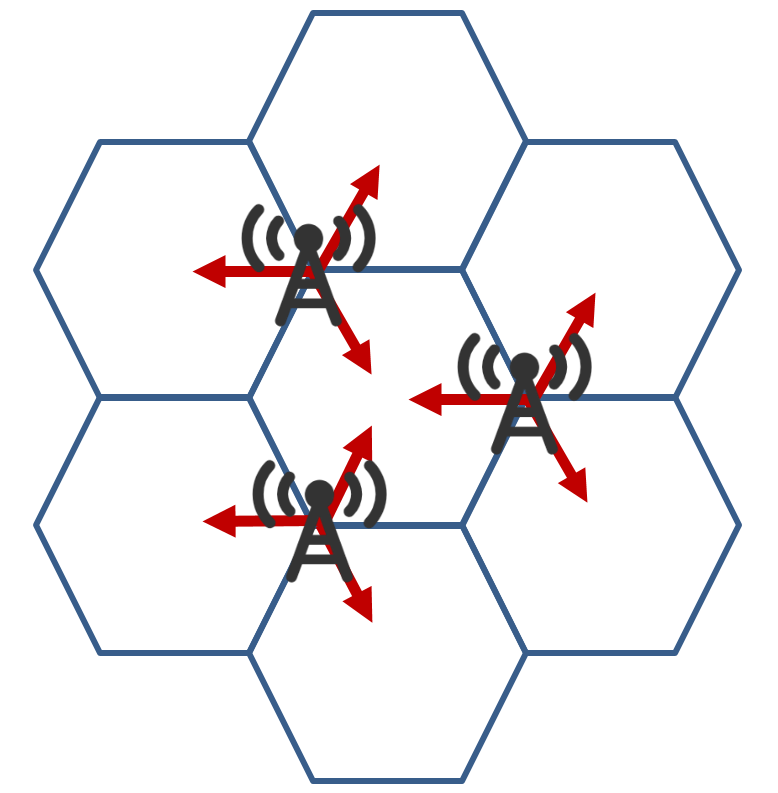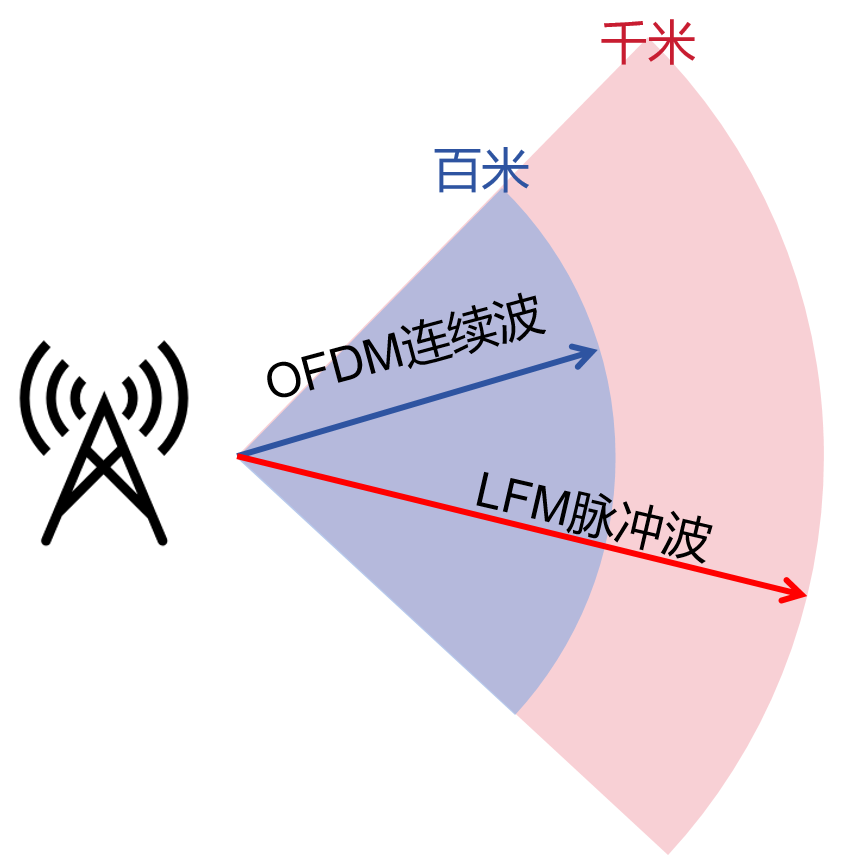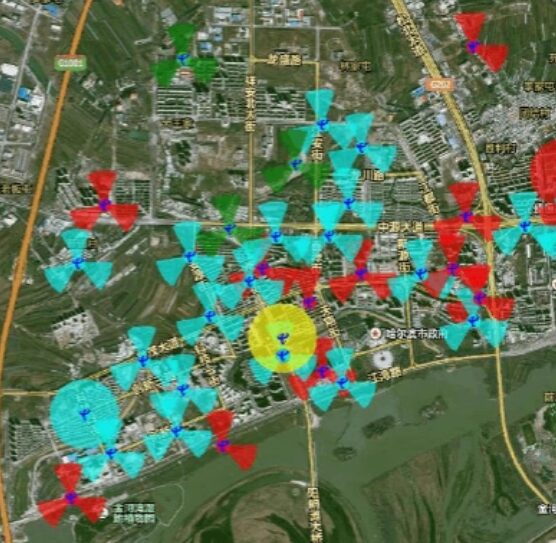Everyone knows that the mobile communication we use every day is also called cellular communication.

In the 1930s and 1940s, when wireless mobile communication was just starting, similar to wireless broadcasting stations, a wireless communication tower was established at the highest point in the city, using lower frequency and higher power signals (longer wavelength, good diffraction ability, and long coverage distance) for wide-area coverage.
This approach is called “central excitation”.
Later, with the surge in the number of users, the capacity and performance of this coverage method no longer met the requirements. Thus, in 1947, Bell Labs in the United States first proposed the concept of “cellular”.
In other words, by replacing large base stations with numerous smaller base stations, seamless signal coverage can be achieved.

Meanwhile, experts further divided each base station, replacing omnidirectional antennas with directional antennas to improve coverage performance.
After calculations, experts found that using three antennas (each covering 120°) was the most cost-effective and effective method, leading to the design of a base station with three sectors.

From the diagram below, it can be seen that base stations are set at the three vertices of each hexagonal cell, with each base station using three directional antennas to cover one-third of the area of three adjacent cells.

The above method is known as the “vertex excitation” method.
The “vertex excitation” method is the main networking method for our current mobile communication networks. Because it looks like a honeycomb, cellular mobile communication is also called cellular mobile communication.

So, what is fish scale networking?
Fish scale networking is a new type of networking proposed by China Mobile aimed at the “low-altitude intelligent network”.
The country is currently vigorously promoting the low-altitude economy, and the new “integrated sensing” technology launched by the communication industry allows base stations to have the capability of “radar” to perceive and detect the position, altitude, and speed of unmanned aerial vehicles. (For details, you can check here: link)
China Mobile packages the integrated sensing experimental network and supporting platforms for the low-altitude economy into a “low-altitude intelligent network” technology system. Fish scale networking is one of the contents of this technology system.
Fish scale networking is distinctly different from traditional cellular networking, as shown in the diagram below:

As you can see, in fish scale networking, all base station sectors point in the same direction, resembling fish scales.

If we carefully compare the two networking methods, we find:
1. The traditional three sectors have become a single sector, and they all point in the same direction.
2. The single station coverage distance of fish scale sectors is significantly greater than that of traditional base stations.
First, let’s talk about the distance issue.
The increase in coverage distance is due to the different waveform design of the 5G integrated sensing base station compared to traditional 5G base stations.
In the self-transmitting and receiving working mode of the base station, the 5G base station’s OFDM (Orthogonal Frequency Division Multiplexing) signal is transmitted and received simultaneously, requiring high isolation. At the current technological level, the transmission power cannot be too high (otherwise it will affect reception), so only about 300 meters of close-range coverage can be achieved.
In contrast, the LFM (Linear Frequency Modulation) waveform commonly used in radar systems transmits and receives at different times. Therefore, there is no isolation requirement, allowing for higher transmission power, resulting in greater coverage distance.
By combining continuous wave OFDM and pulse wave LFM hybrid waveforms, we can leverage the advantages of both—using continuous wave OFDM for near-end coverage and pulse wave LFM for far-end coverage, enhancing the overall system’s coverage capability from hundreds of meters to kilometers.

Next, let’s look at why we transitioned from three sectors to a single sector.
The reason traditional terrestrial mobile networks use three sectors is that it can flexibly respond to the complex environment of urban areas with many obstructions such as buildings and trees, which helps to minimize coverage blind spots. By reasonably utilizing frequency spatial reuse technology, it can also efficiently use spectrum resources and increase network capacity.

Low-altitude unmanned aerial vehicles will use three networks: the traditional terrestrial network (reuse), the low-altitude network (newly built), and the satellite network (supplementary, backup).

During flight, the low-altitude network is primarily used. This network is specially newly built and employs integrated sensing base stations, which have perceptual capabilities and cover a large height range. (The integrated sensing base station is specially designed, with vertical and horizontal angles larger than traditional 5G base stations. The vertical angle has increased from the traditional 24° to over 60°. The coverage height has increased from 100 meters to 300 meters.)
To cover the unobstructed low-altitude airspace, larger sector areas are needed, and the networking should be simpler to minimize the frequency of unmanned aerial vehicles switching cells, thus saving costs.
Fish scale networking obviously has such advantages, making it suitable for coverage in open and large areas.

It is worth mentioning that there will be coordination and interference issues between the newly built low-altitude network and the existing terrestrial network.
Traditional mobile phones work on the ground, where there are many obstructions, so the transmission between the phone and the base station is mainly non-line-of-sight (NLOS), experiencing relatively little interference from surrounding neighboring cells.
When unmanned aerial vehicles fly in the air, although the height is not high, there are fewer obstructions between them and the base station, leading to primarily line-of-sight transmission. In this case, they are more susceptible to downlink interference from surrounding neighboring cells and can easily interfere with the uplink of surrounding neighboring cells.
To solve this problem, it is necessary for the low-altitude network base stations and terrestrial network base stations to coordinate and schedule more, allocate different frequency points, limit the frequency of unmanned aerial vehicles switching between the low-altitude network and the terrestrial network, and reduce co-channel interference. (Similar to high-speed rail dedicated networks)
On the other hand, differentiated power control should be applied to unmanned aerial vehicles to reduce their transmission power and avoid interference with neighboring cells.
That’s all for the introduction to fish scale networking.
With the continuous advancement of the low-altitude economy, there will be more and more low-altitude experimental networks across the country. There are still many areas worth studying around the construction and optimization of low-altitude networks, which may also incubate more innovations.
Source: Xiaozhao Jun
Reviewed by: Zhao Lixin
